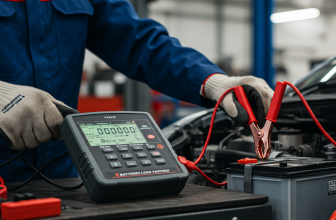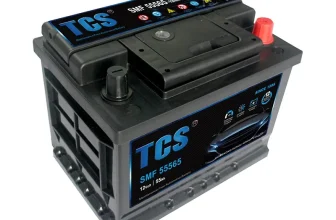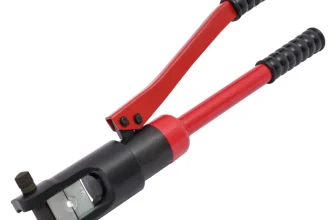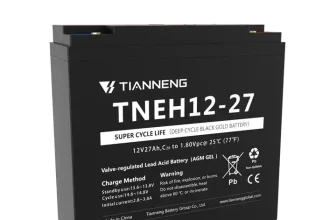Forklifts powered by electricity have become very popular in more recent years, and that means the demand for forklift batteries has increased along with them.
Electric forklifts are not something new, even some of the very first forklifts were powered by electricity.
The first batteries were not nearly as good as those we have today, and there have been huge strides made in battery technology in recent years.
The durability, capacity, and output of batteries these days are way ahead of those that were available when the first battery powered forklifts were designed.
Best Environments
The environments best suited for forklifts powered by batteries are those that are indoors or some other enclosed spaces.
There are also some industries like food processing and medical manufacturing that require forklifts with no exhaust emissions.
In these types of environments forklifts powered by other fuels like gasoline, diesel, LP (propane) gas, or CNG (compressed natural gas) are not suitable.
Battery Power Advantages
Probably the biggest advantage of battery powered forklifts is the fact that they require much less maintenance than those powered by internal combustion engines.
Internal combustion engines require oil changes, filter changes, coolant changes, and tune ups.
Electric motors do not require any of these things, so they are much less work to maintain.
Another major advantage of battery powered forklifts is their lack of exhaust emissions.
In addition to that, they produce much less noise when operating than other types of forklifts.
Battery Power Disadvantages
There are some disadvantages to battery powered forklifts though, and they could be a deal breaker depending on the application.
Battery powered forklifts tend to be not as powerful as their internal combustion counterparts.
They are also not usually suited for wet conditions, such as outdoor use.
Forklift batteries also lose voltage as they run down, so battery powered forklifts will gradually lose power and performance during a shift.
It also takes quite a bit of time to charge forklift batteries because they are generally have a very large capacity.
Even the fastest forklift battery charging methods are much slower than filling the tank of a gas or diesel powered forklift, swapping out an LP tank, or filling a CNG tank.
Some types of forklift batteries also need a long cool down period after charging before they can be used.
During the charging and cool down period a battery powered forklift will not be available for use unless you have multiple batteries to swap, so this can add up to quite a bit of downtime.
Types of Forklift Batteries
The most common types of forklift batteries in use today are the lead acid battery, and the lithium ion battery.
The vast majority of forklifts used commercially have one of these two types of batteries.
Lead acid batteries are the older of the two technologies and are the same kind of battery as a traditional car or truck battery.
Lithium ion batteries are much newer technology and are the same type used in modern laptops and cell phones.
Battery technology keeps improving over time, so there is not much doubt that battery powered forklifts will be popular for many years to come.
Battery Construction
Forklift batteries have a high capacity and are very heavy, although lithium ion batteries and lighter than their lead acid counterparts.
They are actually made up of multiple batteries that are wired together.
These individual batteries are usually called cells.
If an individual battery (cell) goes bad it can be replaced with a new one, and the rest of the cells can continue to be used.
Battery Capacity
As mentioned previously, forklift batteries have a high capacity.
Forklifts are generally pretty heavy machines that can lift and move a lot of weight.
Moving heavy things takes a lot of power, so that means batteries with a high capacity are a must.
Forklift battery capacity is measured in amp hours.
The capacity of a standard car battery is around 50 – 70 amp hours.
In contrast, a forklift battery can have a capacity of well over 1,000 amp hours.
That is definitely quite a bit more than a regular car battery.
Lead Acid Forklift Battery Advantages
Lead acid forklift batteries are less expensive than their lithium ion counterparts, so that means there will be less upfront costs when purchasing equipment.
That is their main advantage, so if minimizing upfront costs at the expense of longer term costs is critical then lead acid forklift batteries could be a good choice.
Lead Acid Forklift Battery Disadvantages
One of the main disadvantages of lead acid forklift batteries is that they have a short runtime per charge.
While this will vary, a typical lead acid battery will be able to operate a forklift for around 5 to 6 hours, so with very heavy use a lead acid battery powered forklift will not make it through a full shift on a single charge.
There are some ways to help extend this time without swapping out batteries, such as opportunity charging.
Opportunity charging just means topping off a forklift’s battery charge when the forklift is not being used, such as during breaks or at lunch time.
Performing a full charge on lead acid forklift batteries requires the battery be removed from the forklift.
These types of forklift batteries are also less tolerant of temperature extremes than some other types of batteries.
Lead acid batteries also get hot after a full charge, and this means they need a cool down period after a full charge before they can be used.
This cool down period can be significant, as much as 8 hours depending on the battery.
They also require a lot more maintenance and care to make sure they have the optimal lifespan.
Lead acid cells also need to be balanced from time to time.
Balancing should be done around every 10 charges or so as a general rule.
Some forklift battery chargers have functionality built in that will automatically take care of balancing lead acid forklift batteries when needed.
Lead acid batteries also contain electrolyte (water) that needs to be kept at a certain level.
This electrolyte must be checked on a regular basis to make sure optimum battery performance and lifespan are maintained.
As you can see, the list of disadvantages for lead acid forklift batteries is pretty long, and that is why their use has been steadily declining.
Being that lead acid batteries are an old technology that dates back to the mid 1800s it makes sense there would be several disadvantages versus a newer battery technology such as lithium ion.
Lithium Ion Forklift Battery Advantages
There are many advantages to using lithium ion batteries in forklifts over the older lead acid technology batteries.
They have a longer runtime than lead acid batteries, typically over 7 hours per charge.
Lithium ion forklift batteries also charge very quickly.
These types of forklift batteries can typically be charged in only 1 -2 hours, and lithium ion forklift batteries do not need to be removed from the forklift to charge.
There is also much less maintenance required for lithium ion batteries.
They are do not require cell balancing like lead acid batteries do as lithium ion battery cells are able to balance themselves automatically.
In addition, lithium ion forklift batteries do not have any electrolyte (water) that needs to be checked and added when low.
The cells in lithium ion forklift batteries are sealedshut, so there is no issue with electrolyte leaking or spilling as with lead acid forklift batteries.
They are also lighter than lead acid forklift batteries of the same capacity.
Lithium Ion Forklift Battery Disadvantages
Lithium ion forklift batteries have a lot of advantages over lead acid ones.
There is really only one major disadvantage of lithium ion forklift batteries when compared to their lead acid counterparts.
That disadvantage is their upfront cost of the batteries.
Lithium ion forklift batteries can cost quite a bit more than lead acid forklift batteries.
Over time though, the longer life and reduced maintenance of lithium ion forklift batters will more than pay for itself when compared to lead acid forklift batteries.
Another minor disadvantage of lithium ion forklift batteries in some applications is that they are lighter.
You would think that being lighter would be an advantage, and it is in many instances.
But since the battery is lighter that means the forklift weight distribution and total weight is changed.
If the forklift is designed to lift heavy loads additional counterweight may need to be added for balance to make up for the lighter lithium ion forklift battery.
Final Thoughts
When talking about the different types of forklift batteries lithium ion batteries are the clear winner in almost all categories.
The only real exception to this is the higher upfront costs they have.
Only if upfront costs are a major concern can a case be made for using older lead acid style batteries in forklifts.
We hope that the information here has helped you make a better decision about what type of battery is best for your forklifts.







